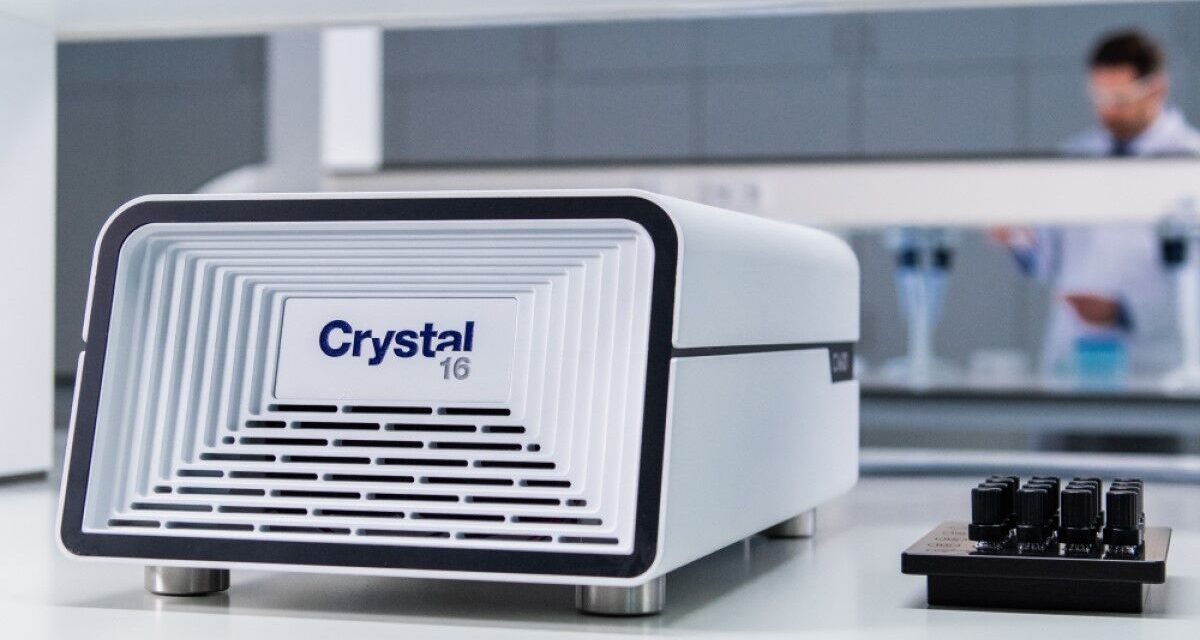Crystallization is one of the oldest separation methods and contributes to the efficient production of new pharmaceutical products. However, to minimise contamination and maintain precision, control and quality, technicians will often spend up to 20 per cent of their time cleaning equipment before testing. Here Thomas Kendall, application specialist at crystallization specialist Technobis Crystallization Systems, explores how pharmaceutical scientists can increase their experimental throughput using benchtop analytical technology.
Crystallization is a vital tool in synthetic chemistry for removing impurities that cannot be removed from a synthesis step. It is also used in drug formulation and tableting applications, where it offers an effective way of producing particles with a specially designed set of properties that give the best performance in formulation and processing.
However, crystallization can also be the villain of the process. For example, in liquid formulation for some medicines, you want the compounds to remain in the solution without crystals forming, so the patient can take them as a liquid. In these situations, stabilising agents are needed to stop crystallization from occurring.
The varied applications, and the associated challenges, means that studying crystallization can be time-consuming and resource intensive. With new industry standards of analytical equipment, scientists can save time in their investigations and gather more information out of a single experiment. This is crucial because the more information scientists can gather, the more effectively they can draw conclusions. So, what are the analytical instruments best suited to help scientists moving forward?
A new industry standard
New analytical equipment is being designed to work with much smaller operating volumes than was previously possible, with some instruments offering a 20 times reduction in the amount of material needed, compared to traditional solutions. This means scientists can run a lot more experiments using the same amount of material or, in cases where samples are limited, they can gather as much data as before while preserving a lot more of their sample.
Traditionally, experimental determination of solubility curves relies on labour-intensive techniques. However, thanks to increased automation, gathering solubility data has never been easier. The latest crystallization instruments allow users to set up their desired experiment and go away, leaving the instrument to run the experiment independently knowing the data will be there, ready to collect and analyse, when they return.
For example, the Crystal16™ from Technobis Crystallization Systems combines automation with integrated turbidity measurement to determine cloud and clear points, resulting in solubility data at an early stage in discovery. This instrument uses minimal sample volumes and is well suited to acquiring solubility at the early stages of drug discovery processes. By using a Crystal16™ with 16 vials holding four different concentrations of a drug substance in four different solvents and applying two temperature cycles, four solubility curves can be simultaneously measured in duplicate in half a day.
Cut down cleaning and contamination
Scientists spend a lot of time cleaning equipment and instruments for their experiments, and, in some cases, this can use as much as 20 per cent of their time. Technobis Crystallization Systems offers next generation in-line analytical equipment that is non-invasive, so operators do not need to physically insert things such as probes into samples for analytics. This means there is no need to worry about cleaning samples or probes, and there is no opportunity for cross contamination to occur.
For example, the Crystalline™ series provides in-line analytical capabilities, such as turbidity, particle visualisation and Raman spectroscopy, without inserting any probes into the reaction vessels. This allows users to assess particle shape and size in real time and, by making use of thermocycling programmes, investigate and control the crystallization process without cross contaminating samples.
Upgrading your processes to take advantage of automated analytical equipment does not have to involve an expensive overhaul of your entire laboratory. It just requires careful investments and a strong relationship with a reliable partner who can help you identify the right instrument for your process, taking operational context, such as budgets, available space and in-house expertise, into account.
To find out how we can help you accelerate your crystallization and solid-state research, visit www.crystallizationsystems.com/contact.



